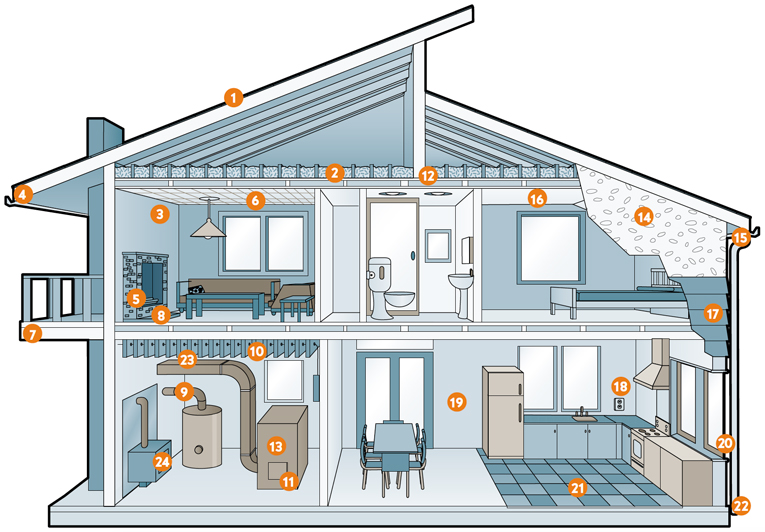A survey conducted earlier this year by a Canadian bank found that nearly 40 per cent of B.C. homeowners were planning on renovating their homes. And while that's great news for the construction industry, it's important to be aware of the health dangers that asbestos-containing building materials in older homes pose to contractors and their crew.
For workers in B.C., asbestos-related diseases are the leading cause of death, and the number one cause of death in the construction industry. Between 1996 and 2017, there were 1,101 deaths due to historical asbestos exposure, and about one third of those were construction workers.
Today, the number one way workers are exposed to asbestos is through unsafe practices during demolitions and renovations in residential construction.
WorkSafeBC's Asbestos Initiatives Program is addressing this issue through ongoing outreach, education, consultation and enforcement activities directed toward employers, workers and industry associations. The goal is to save lives by preventing exposure to asbestos.
Asbestos is an odourless, colourless, naturally occurring mineral that can be found in more than 3,000 building materials used in many homes built before 1990.
Some common asbestos-containing materials include vinyl and linoleum flooring, loose insulation, roof shingles, stucco, pipe insulation, gypsum-board filling compound and deck under-sheeting, to name a few.
In most cases, asbestos-containing materials are safe if left alone. But when disturbed by sanding, cutting, scraping or tearing, asbestos fibres can be released into the air and breathed in. That exposure can cause serious health concerns, including lung diseases and cancer.
If you're a general contractor, you have a responsibility to your workers to ensure a safe workplace. Before work begins that may disturb asbestos, you must ensure that a qualified person carries out an inspection to identify the location of asbestos-containing materials. You must also ensure that hazardous materials are safely removed or contained by a qualified asbestos-abatement contractor before work begins or resumes.
Workers, too, have responsibilities for their own health and safety and that of their co-workers, including following safe-work procedures, refusing work they believe may be dangerous or could cause an undue hazard, and reporting the issue.
Handling asbestos improperly can result in stop-work orders and fines, which could affect your business through lost hours, missed deadlines and cancelled projects. And if word gets out that you don't take asbestos seriously, it could harm your professional reputation and your bottom line. Don't take the risk.
For more information on asbestos, visitworksafebc.com/asbestos.

Source: WorkSafeBC
- Roof felt and shingles
- Loose, blown-in insulation, such as vermiculite
- Incandescent light fixture backing
- Roof gutters can be made of asbestos cement
- Artificial fireplace logs and ashes
- Acoustic tiles
- Deck under-sheeting
- Asbestos pad under the fireplace hearth
- Pipe insulation
- Main panel and fuse box; each fuse wire has an individual asbestos flash guard
- Door and gasket covers
- Backing behind recessed lighting
- Boiler and furnace insulation
- Asbestos can be found in stucco
- Soffit boards can be made of asbestos cement or asbestos insulating board
- Textured or stipple-coatedwalls and ceilings
- Asbestos cement (transite) board siding and undersheeting
- Outlets and switches
- Gypsum board filling compound, and patching and joint compound for walls and ceilings
- Window putty
- Flooring: vinyl tiles and linoleum sheet flooring; flooring adhesive
- Downpipes can be made of asbestos cement
- Insulation on electrical wires
- Heat reflector for wood stove










